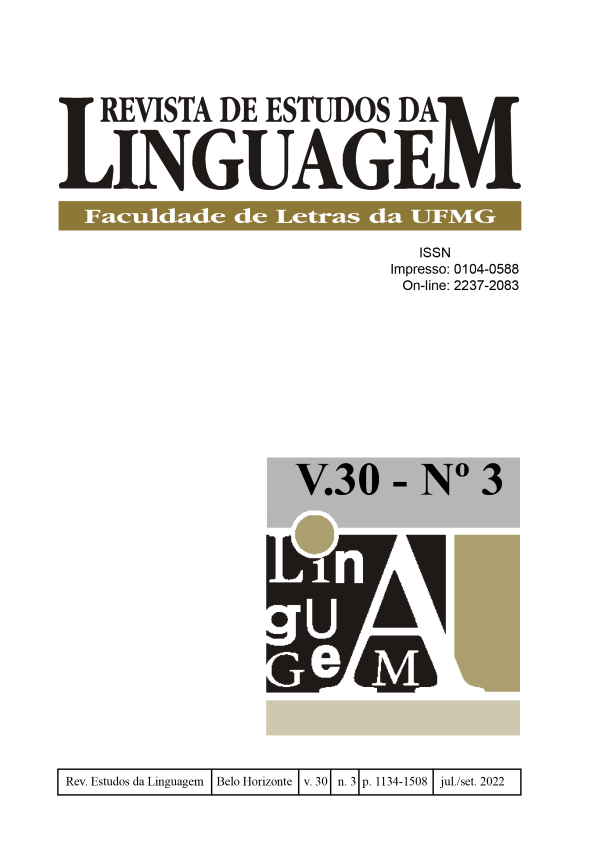The Egressive Aspectual Constructional Family Formation in Portuguese History
Multiform Networks Connections
DOI:
https://doi.org/10.17851/2237-2083.30.3.1206-1237Keywords:
constructional family, egressive aspect, diachronyAbstract
Founded on the theoretical and methodological premises of the constructional approach, which defines language as a complex adaptative system, organized in networks of constructions that, linked by vertical and horizontal links and united by form and meaning traces, constitute families (BYBEE, 2016; DIESSEL, 2019; GOLDBERG 1995; 2006; 2019; SOMMERER, 2020; TRAUGOTT; TROUSDALE, 2021; inter alia); this paper investigates, in diachronic perspective, the genesis and the development of the egressive aspectual constructional family in Portuguese, through three microconstructions’ analysis: [deixar+de+Vinf.], [parar+de+Vinf.] e [largar+de+Vinf.]. Thus, quantitative and qualitative methods are used in the examination of the data collected from Corpus do Português (DAVIES; FERREIRA, 2006; 2016) between 13th and 21st centuries; moreover, in order to verify the extensibility of the pairings in the network, checking the semantic-pragmatic verb types, sanctioned in the Vinf. slot, is listed as a parameter. The results demonstrates that the egressive aspectual group formation originates in the transitive family, whose semantics indicates the distance among the participants in the predication. Member of this family, the contentful microconstruction with deixar has its object slot neoanalyzed, giving rise to [deixar+de+Vinf.] pairing, which, by the spreading activation mechanism, becomes a member of the egressive aspectual family in the auxiliarity network. Subsequently, the [parar+de+Vinf.] e [largar+de+Vinf.] microconstructions emerge by analogization, and, since their sharing similarities, they also consolidate in this procedural group. Therefore, this investigation confirms the importance of associating diachronic trajectories and cognitive processes in explaining how multiform networks link and promote the constructional families’ (re) configuration.




 Esta obra está licenciada com uma Licença
Esta obra está licenciada com uma Licença 